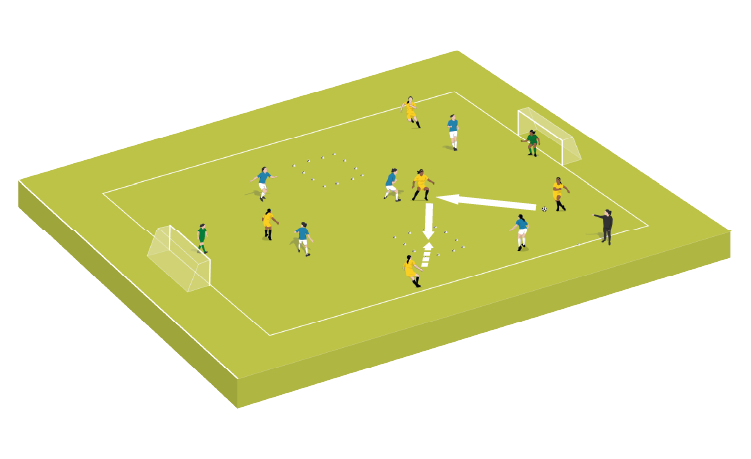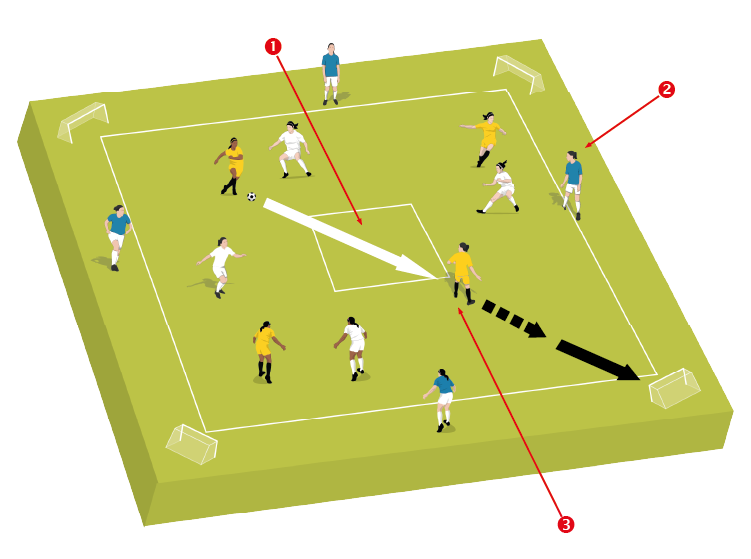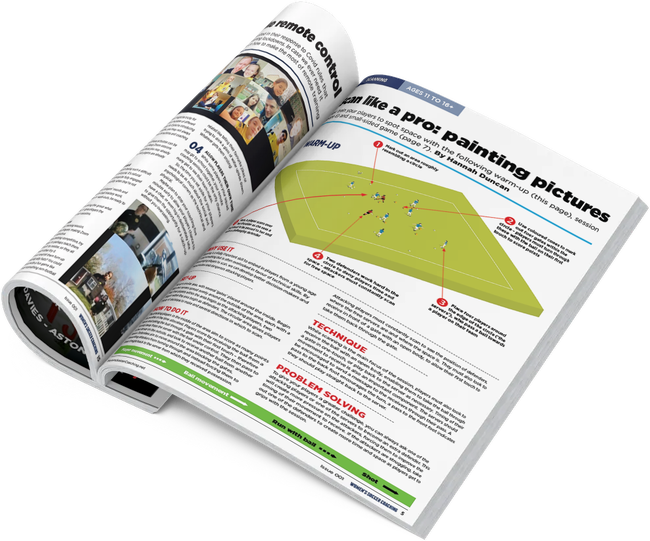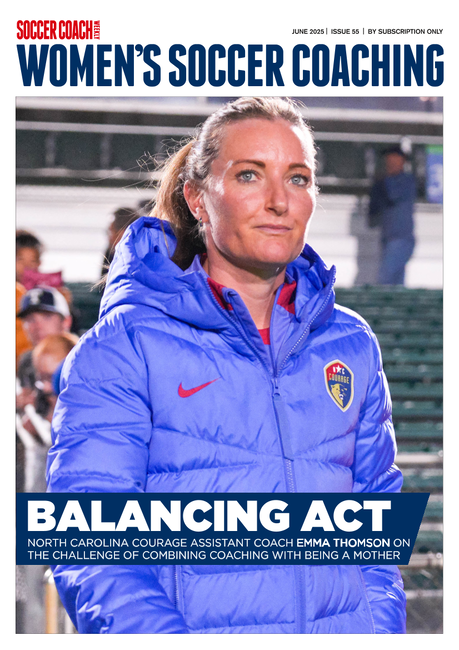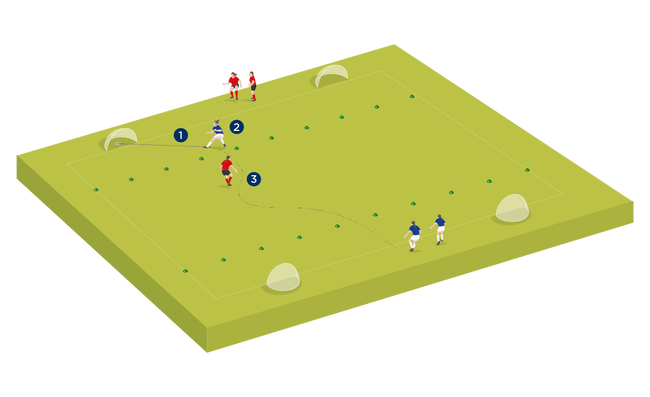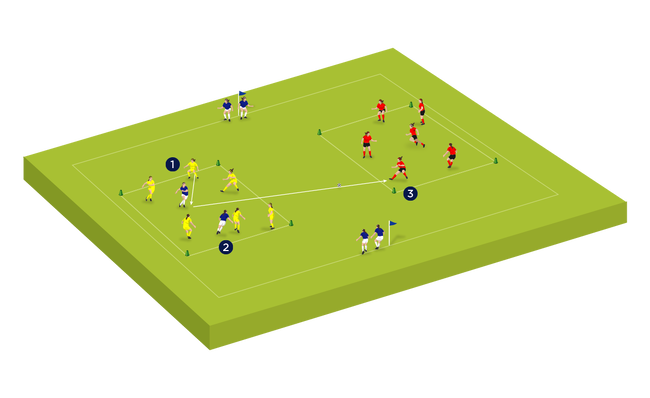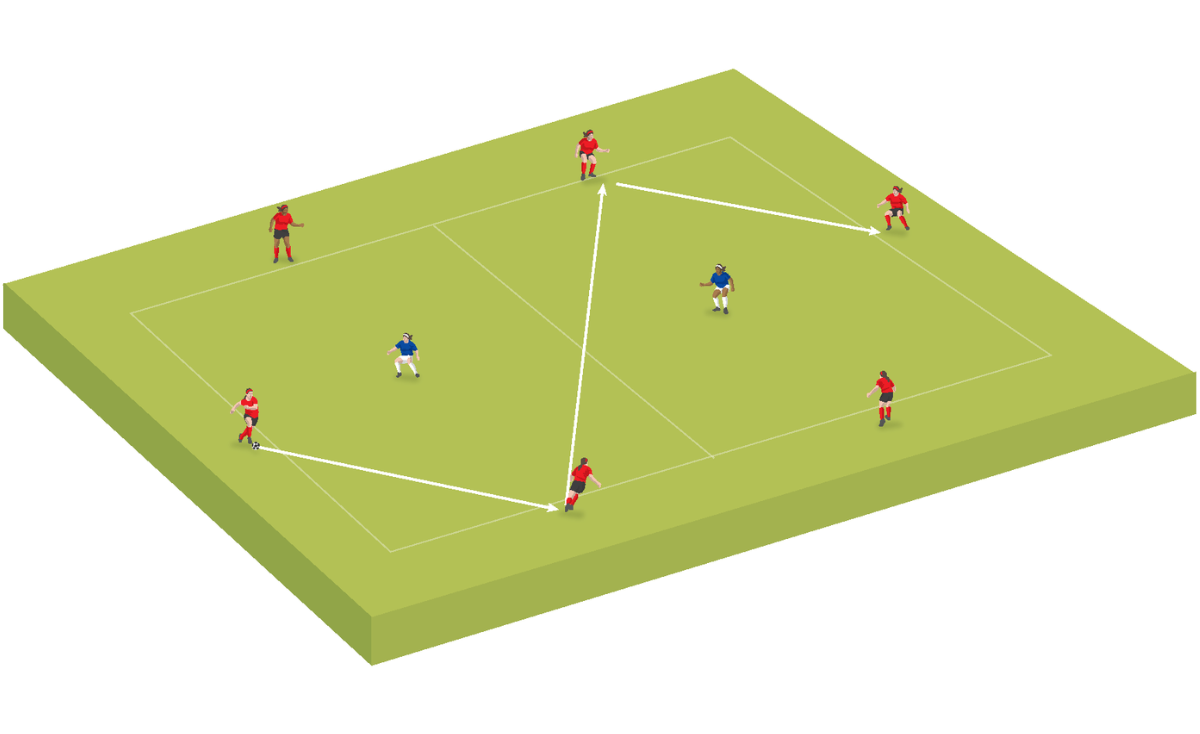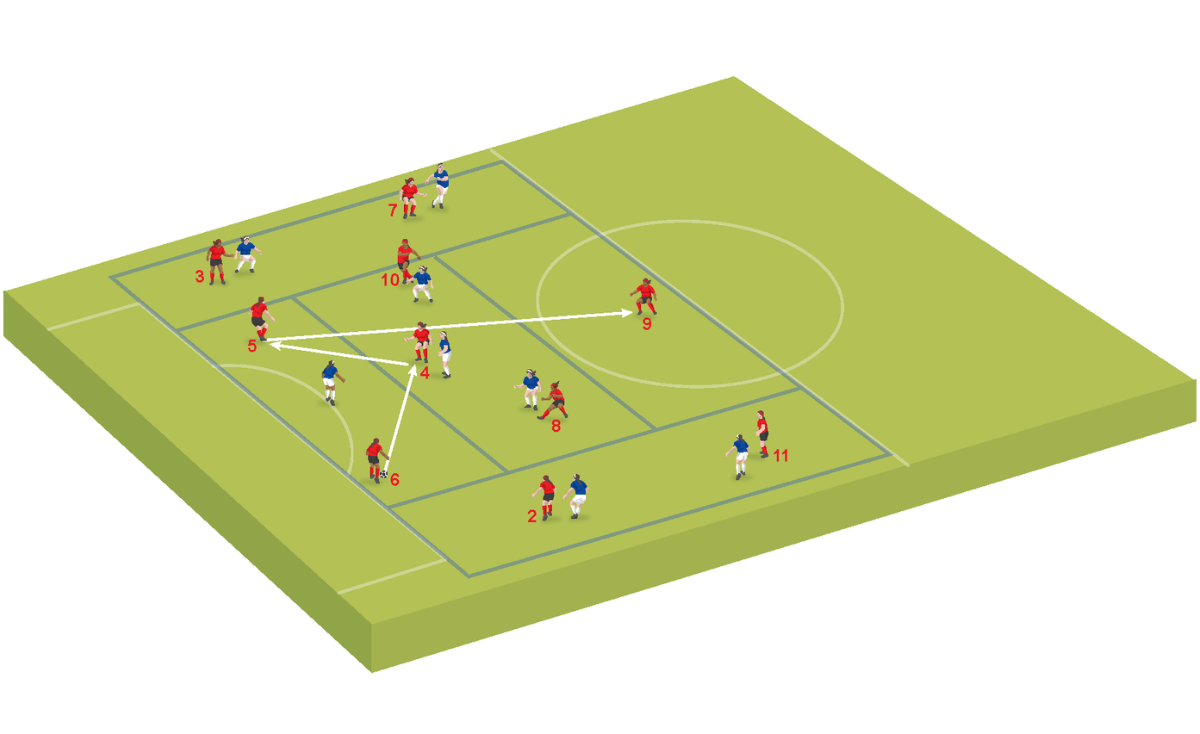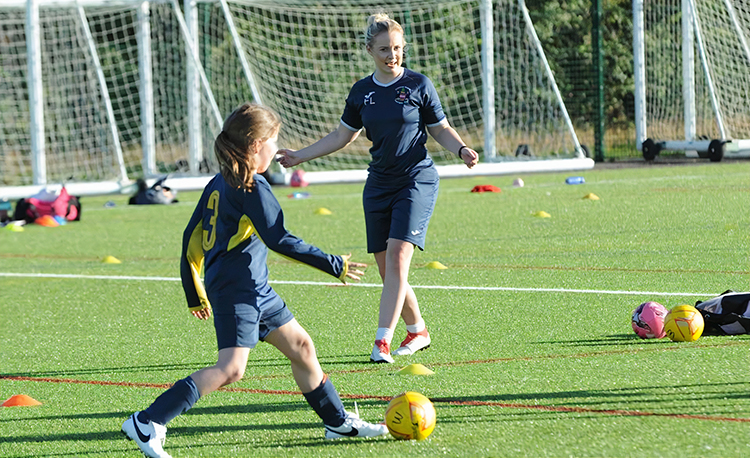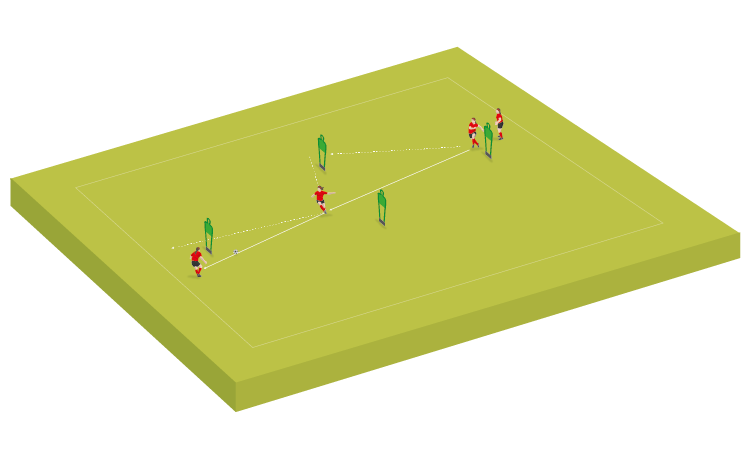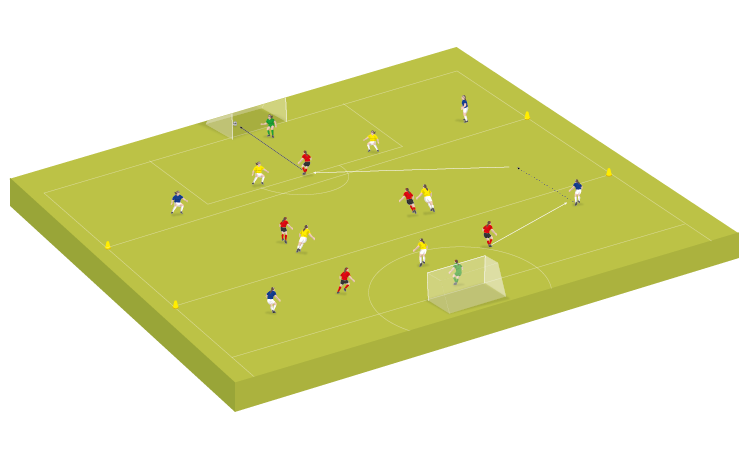You are viewing
1 of your 3 free articles
Practice 2: Creating space to play forward
This practice teaches players when to play penetrative passes and how to create gaps in the opposition. By Man City RTC foundation phase lead Carl Wild
WHY USE IT
This possession-based practice gives players experience of retaining the ball until the right opportunity arises for them to play a penetrative pass to a team-mate. Players looking to receive the pass learn to recognise the right time to make themselves available to the player on the ball, before playing forward quickly themselves.
SET-UP
Set up as in the first practice (see page 10), with another area set out in the middle. Four small goals (or gates) have been added in each corner, distance relative to your players’ ability.
HOW TO DO IT
Teams aim to retain possession of the ball by combining with team-mates and support players. When the opportunity arises, the team in possession looks to pass through the central area to a team-mate, or a team-mate can drop into the central area to receive the pass (they must exit through a different side to which the ball enters). On doing so, they score a point. They can then win a further point if the receiving player scores in one of the two small goals which face the side of the area the player exited, meaning the player is playing forward.
TECHNIQUE
Teams need to be able to retain possession and shift opponents by moving the ball, until space is created to make the ‘point scoring’ pass. The player on the ball needs to have the intention of looking to pass through the central area. This requires awareness of when to play the pass, through identifying the space before receiving the ball or by creating the space themselves by being creative on the ball. The receiving player should stay out of the space until they are able to receive the ball, considering if the player on the ball can make the pass and if the pathway between the ball and where they want to receive it is clear. The receiving players should then look to play quickly and decisively to score the extra point.
ADAPTATIONS
The set number of passes can be removed. In addition, the size of the central area can be made bigger or smaller and it can also be moved to another position within the main area. The goals can be moved further away or closer to the main area.
- Use the same playing area as the previous practice, but with a smaller square marked out in the middle and a mini goal in each corner.
- Split players into three equal teams, with one team acting as neutral support players around the outside of the area.
- The two teams in the middle compete to retain possession, using support players where necessary. When possible, they should look to pass through the central square to a team-mate, or a team-mate can drop into the square to receive - exiting through a different side to which the ball entered. They can then look to score in a mini goal.
Related Files
Newsletter Sign Up
Newsletter Sign Up
Discover the simple way to become a more effective, more successful soccer coach
In a recent survey 89% of subscribers said Women's Soccer Coaching makes them more confident, 91% said Women's Soccer Coaching makes them a more effective coach and 93% said Women's Soccer Coaching makes them more inspired.
*includes 3 coaching manuals
Get Inspired
All the latest techniques and approaches
Women's Soccer Coaching offers proven and easy to use soccer drills, coaching sessions, practice plans, small-sided games, warm-ups, training tips and advice.
We've been at the cutting edge of soccer coaching since we launched Soccer Coach Weekly in 2007, creating resources for the grassroots youth coach, following best practice from around the world and insights from the professional game.

